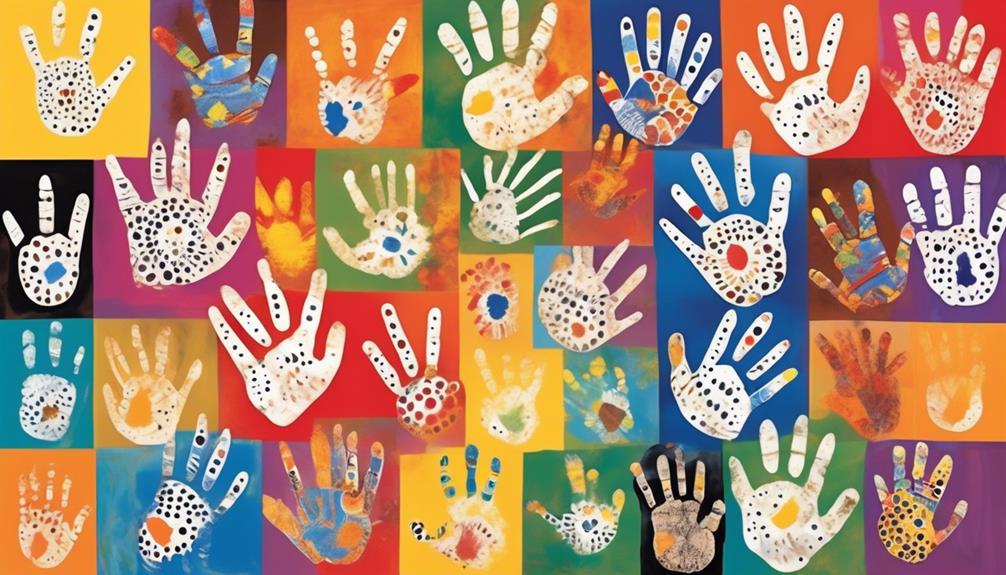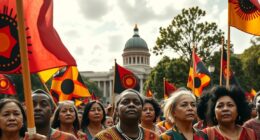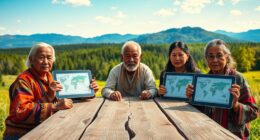So you come across a captivating article that seems to seamlessly blend in with the rest, only to realize it’s cleverly disguised as an advertisement.
Native advertising, a practice that has been gaining momentum, blurs the line between advertising and editorial content, leaving you to wonder about its impact on media integrity and ethical concerns.
What are the implications of this trend, and how does it affect your trust in the information you consume?
Let's explore the complexities and consequences of native advertising in today's media landscape.
Key Takeaways
- Blurring the line between advertising and editorial compromises the integrity of journalistic content and challenges readers to differentiate between the two, eroding trust in the publication.
- Lack of transparency and deceptive practices of native advertising create confusion and skepticism towards brand messaging, impacting consumer trust and the ability to disclose native advertising.
- Native advertising challenges the separation between editorial and sponsored content, raising questions about impartiality and independence of journalists, and undermining the purpose of journalism to inform and serve the public interest.
- Ethical concerns include maintaining transparency about the sponsored nature of content, balancing financial interests with journalistic integrity, and upholding ethical standards to preserve the credibility of journalism.
Blurring the Line Between Advertising and Editorial
Blurring the line between advertising and editorial can create confusion for readers and compromise the integrity of journalistic content. It's essential to maintain editorial independence to uphold the trust of consumers.
When advertising content closely resembles editorial content, it becomes challenging for readers to differentiate between the two. This blurring of lines can erode the trust that readers have in the publication, as they may feel deceived or manipulated.
Maintaining a clear distinction between advertising and editorial content is crucial for preserving the credibility of the publication and ensuring that consumers can trust the information they receive.
To achieve editorial independence, it's important for publications to establish and enforce clear guidelines for distinguishing between advertising and editorial content. By doing so, they can uphold the principles of journalistic integrity and avoid undermining the trust of their audience.
When readers can trust that the content they're consuming is unbiased and free from commercial influence, they're more likely to engage with the publication and rely on it as a credible source of information.
Lack of Transparency and Deception

Readers may find themselves confused and suspicious when native advertising lacks transparency and attempts to deceive by closely mirroring editorial content. This lack of transparency can lead to consumer trust issues and ultimately harm the brand's reputation. Here's why this is a critical issue:
- Deceptive Practices: When native advertising is presented in a way that closely resembles editorial content without proper disclosure, it can deceive readers into believing that they're consuming unbiased information, eroding trust and credibility.
- Transparency Concerns: Without clear labeling or visual cues, consumers may struggle to differentiate between native ads and genuine editorial content, leading to confusion and potential skepticism towards the brand's messaging.
- Impact on Consumer Trust: The failure to disclose native advertising can result in a breach of consumer trust, as it violates the expectation of transparency and honesty in content consumption.
To address these challenges, it's essential for brands and publishers to prioritize transparency in native advertising to maintain consumer trust and uphold ethical standards in content marketing.
Impact on Journalism Integrity
Amid the rise of native advertising, journalism integrity faces a significant impact, challenging the traditional separation between editorial content and sponsored material. Native advertising's influence on credibility and journalistic independence is a concern for maintaining the trust and objectivity of journalism. As native advertising blurs the line between editorial and promotional content, it raises questions about the impartiality and independence of journalists and media outlets.
| Impact on Credibility | Influence on Journalistic Independence | Implications |
|---|---|---|
| Native ads may be perceived as unbiased journalism, impacting the credibility of news sources. | Journalists might face pressure to align content with advertisers' interests, compromising their independence. | Threatens the public's ability to distinguish between unbiased news and paid promotions. |
| Readers may lose trust in media outlets if they feel deceived by native ads presented as regular news. | Advertiser influence may lead to self-censorship among journalists, affecting the quality and diversity of news coverage. | Undermines the fundamental purpose of journalism to inform and serve the public interest. |
Maintaining journalism integrity in the face of native advertising requires a commitment to transparency, ethical standards, and a clear demarcation between editorial and sponsored content. It is essential to uphold the principles of accuracy, fairness, and independence to preserve the credibility of journalism.
Ethical Concerns and Dilemmas

Native advertising poses ethical concerns and dilemmas for journalists and media outlets as they navigate the balance between financial interests and journalistic integrity. The following points highlight the ethical implications and dilemmas associated with native advertising:
- Transparency: Maintaining transparency about the sponsored nature of content is essential to uphold ethical standards. Failure to clearly distinguish between editorial and sponsored content can deceive consumers and erode trust.
- Influence on Editorial Independence: Native advertising can potentially compromise the editorial independence of media outlets. When financial interests dictate content, the credibility of journalism is at stake.
- Consumer Trust: The use of native advertising may lead to a decline in consumer trust if not executed with ethical considerations in mind. Media outlets must prioritize the interests and trust of their audience over the financial gains associated with native advertising.
Balancing the need for revenue with ethical responsibilities is a complex challenge that media professionals must address to maintain the integrity and trustworthiness of journalism. By navigating these ethical concerns, journalists and media outlets can uphold their commitment to delivering reliable and unbiased information to the public.
Regulatory Challenges and Solutions
Navigating the ethical concerns and dilemmas surrounding native advertising leads to the recognition of regulatory challenges and the need for effective solutions in the media industry. As the landscape of advertising continues to evolve, ensuring regulatory compliance and industry standards becomes increasingly complex.
One of the primary regulatory challenges is the lack of clear guidelines for native advertising, leading to potential confusion and ambiguity for both advertisers and consumers. Furthermore, the dynamic nature of digital media platforms presents difficulties in establishing consistent regulatory frameworks that can keep pace with technological advancements.
To address these challenges, industry stakeholders must work collaboratively to develop transparent and comprehensive regulatory standards for native advertising. This may involve establishing guidelines for clear disclosure of sponsored content, distinguishing it from editorial content, and ensuring that consumers can easily identify paid promotions.
Additionally, there's a pressing need for regulatory bodies to adapt and evolve their oversight mechanisms to effectively monitor and enforce compliance with these standards in the digital sphere.
Frequently Asked Questions
How Do Advertisers Benefit From Blurring the Line Between Advertising and Editorial Content?
Advertisers benefit from blurring the line between advertising and editorial content by gaining more credibility and trust from consumers. By appearing as genuine content, advertisers can reach audiences more effectively.
However, this raises ethical concerns due to deception tactics and the impact on journalism. This blurring also creates confusion for consumers, potentially leading to distrust.
It's important to consider the ethical implications and potential negative impact on the integrity of journalism.
What Are Some Common Tactics Used to Deceive Readers Through Native Advertising?
When it comes to native advertising, deceptive tactics like camouflaging promotional content as editorial material and strategically placing it within a site can manipulate readers.
This blurring of the line between advertising and editorial content can make it hard for you to distinguish between what's genuine and what's a sales pitch.
It's crucial to be aware of these tactics and stay vigilant to avoid being misled by such strategies.
How Does Native Advertising Impact the Credibility and Trustworthiness of Journalism?
Native advertising impacts the objectivity of journalism by blurring the line between editorial content and paid promotions. This blurring can erode the trustworthiness of news sources, as readers may struggle to differentiate between unbiased reporting and sponsored content.
The subtle integration of advertisements into news articles can compromise the credibility of journalism, creating skepticism and confusion among readers. It's essential for news organizations to maintain transparency and uphold journalistic integrity to preserve trust.
What Are Some Ethical Dilemmas Faced by Journalists When It Comes to Native Advertising?
Facing ethical challenges, journalists navigate the delicate balance between preserving journalistic integrity and meeting advertising demands. Similar to walking a tightrope, they must maintain credibility while engaging in native advertising.
Striving for transparency, they confront the dilemma of upholding professional standards without compromising the audience's trust. Negotiating these complexities requires a mastery of ethical decision-making and a commitment to upholding the principles of journalism.
What Are the Current Regulatory Challenges Surrounding Native Advertising and What Potential Solutions Are Being Considered?
Regulatory challenges surrounding native advertising stem from blurred lines between content and ads, raising concerns about transparency and consumer protection.
Potential solutions being considered include stricter disclosure requirements and clearer labeling standards.
Advertiser benefits often clash with ethical journalism practices, creating a complex landscape for regulation.
Navigating these challenges will require balancing the interests of advertisers with the need for transparency and integrity in media content.
Conclusion
In conclusion, native advertising is like a wolf in sheep's clothing, deceiving readers and damaging journalism integrity. It blurs the line between advertising and editorial, creating ethical dilemmas and regulatory challenges.
It's time for transparency and accountability in the industry to protect the integrity of journalism and ensure readers can trust the content they consume. Let's work together to address this problem and uphold the values of honest and reliable journalism.









